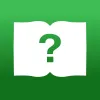Take a look inside 5 images
Literacy Leveler
Pros: Sleek, simple interface make searching and sorting a breeze. Quick-reference Correlation Chart is a big help.
Cons: Features are limited, and some require an in-app purchase.
Bottom Line: A good tool for what it does, but look elsewhere for a more expansive feature set.
Scan your library book by book to create a convenient list of all your classroom books and their reading levels. Add notes to individual books to keep track of how you used them in class (for a particular lesson, in a particular year) or to record which students you shared them with.
Literacy Leveler is a search tool for finding leveled books for K-8 students. Teachers can use the device’s camera to scan books’ barcodes or type to search for books by title or ISBN. Each book features a cover image, title, and three indicators of the book’s reading level: Lexile, DRA, and GRL. For books that lack one of those level indicators, users can tap to add their own. Teachers can also type in custom notes about each book. Once a teacher searches for or scans a book, the book can be added to the app’s library. Teachers can sort the library by Title, Author, Lexile, DRA, or GRL. When users tap More at the bottom of the screen, they find a manual with frequently asked questions and a link to email developers for support. Most important, this page features a Correlation Chart that gives teachers an at-a-glance comparison of which scores correlate to which grade and reading level.
A Classroom Checkout option allows teachers to manage the lending of their classroom libraries, but this feature only works if users have purchased the developer’s Classroom Checkout app.
The ability to search for books, see their covers, and sort them by several characteristics is useful. It’s also helpful to be able to customize the app through each book's Notes page. Unfortunately, these customization features are limited, and it turns out that a desirable feature that initially seems built in -- the Classroom Checkout feature -- is only available for an additional $3. While teachers could use each book’s Notes page to keep track of lending, it’s too bad this feature isn’t included, as it is in other apps. Additionally, it would be helpful if teachers could create multiple libraries within the app, like a list of books for home, the classroom, and a book wish list. With a few more features, this could be a stellar app for managing, sorting, and using a classroom library. Comparable apps with the same features are available at a lower price, so some users might look elsewhere for a better value.













